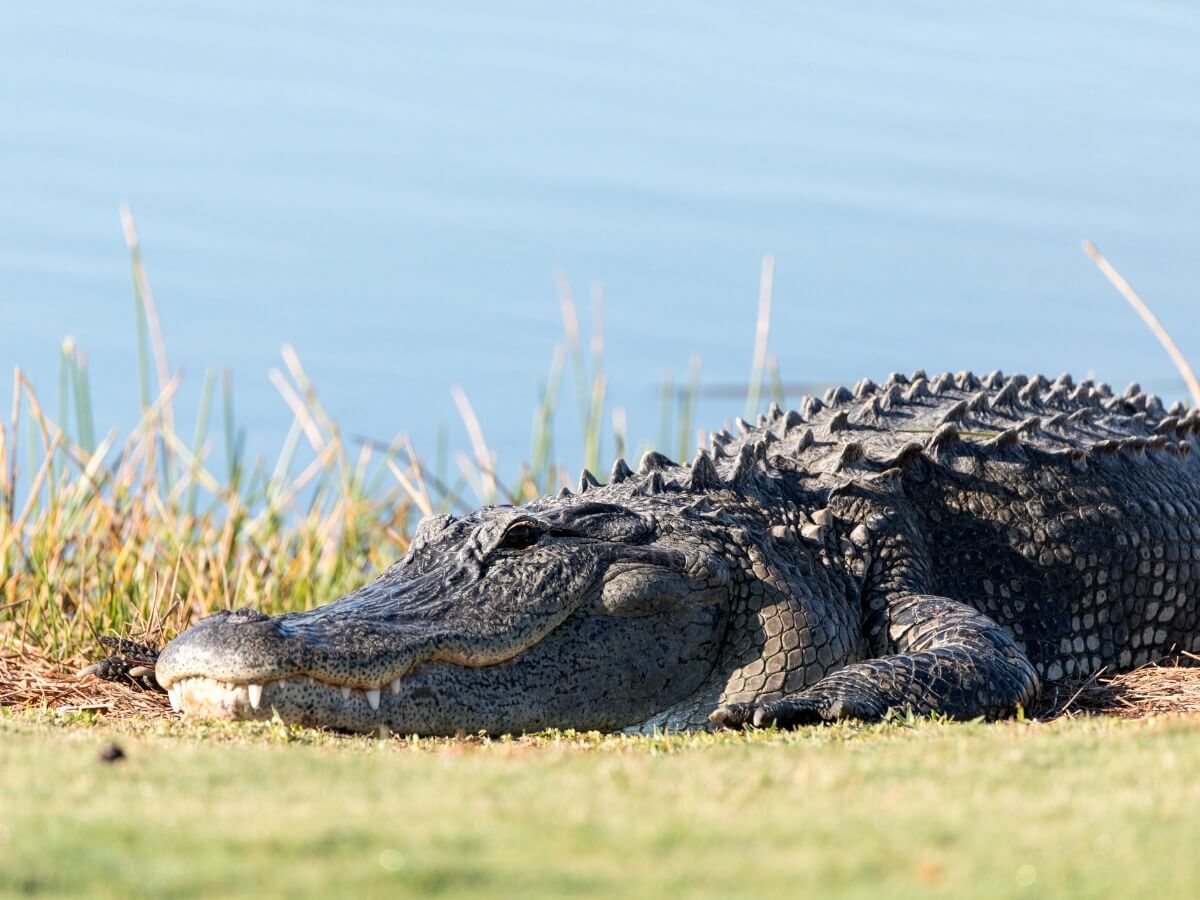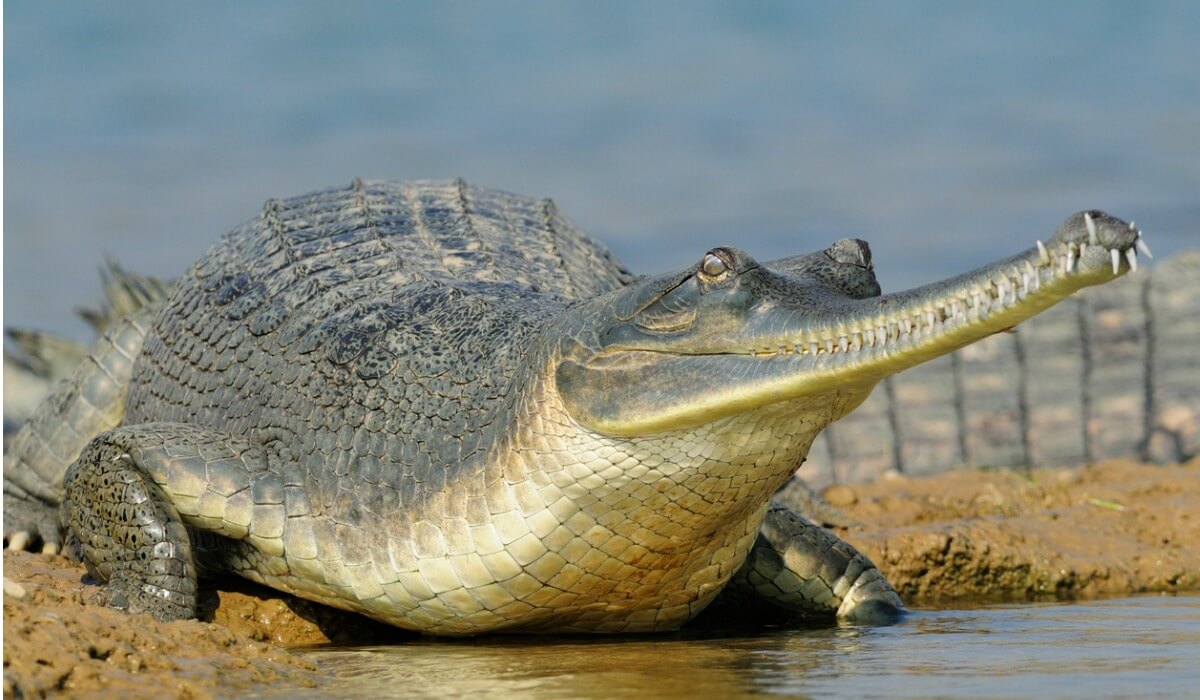9 Types of Crocodiles


Written and verified by the biologist Francisco Morata Carramolino
Crocodiles are the largest reptiles in existence today. Although they look like gigantic lizards, they’re not closely related to them. They’re actually archosaurs, an ancient group of reptiles to which birds also belong. So, how many types of crocodiles are there?
Although in the past they occupied very different niches, today’s types of crocodiles are dominant predators that lurk in the water and rely on their extremely powerful bite to hunt. If you want to learn more about these awesome animals, keep reading!
Characteristics and habitat of crocodiles
Crocodiles are superficially similar to a lizard, although larger, more muscular, and imposing. Its legs are short, the body is elongated and the tail, which is flattened laterally, is long and very powerful.
The head is one of their most characteristic aspects. It usually takes up about a seventh of the total length of the animal. It’s long, flattened dorsoventrally and is full of sharp teeth. Its skin is another of its defining features. It’s has a heavy armour, made up of keratin scales and osteoderms – plates of bone.
Most crocodile species live near the tropics, as they need high temperatures to keep their metabolism active — they’re ectotherms. All crocodilians have a link to aquatic environments, especially freshwater ones. They occupy swamps, lakes, rivers, estuaries, floodplains, and other similar wetlands, provided they have an abundance of vegetation and dams.
Types of crocodiles
To date, 24 types of crocodiles have been identified, and these are divided into three clearly differentiated families. Next up, we’ll explain their main features.
True crocodiles (Crocodylidae family)
This is the largest family, with 14 species belonging to 3 genera. Only two of the species in this family are outside the genus Crocodylus. True crocodiles are distributed throughout the world.
These gigantic reptiles can be differentiated from the rest by their triangular head, which tapers towards the tip of the snout. Also, their upper and lower teeth are visible when they close their mouths.
Some representative species of true crocodile are as follows:
- Saltwater crocodile (Crocodylus porosus): The largest reptile in the world, as it can reach up to 7 meters in length (23 feet) and weigh 1000 kilos (2200 pounds). It’s more territorial and aggressive than its relatives, which makes it one of the most dangerous. Saltwater crocodiles appear in Southeast Asia and northern Australia. They live in fresh and brackish waters, but they can also go out to the open sea.
- Nile Crocodile (Crocodylus niloticus): Not inconsiderable in size, this is the largest crocodile in Africa. It spans the Nile basin and much of sub-Saharan Africa. Its diet is extremely varied, as it includes any animal that crosses its path.
- African snout crocodile (Mecistops cataphractus): Another of the African species, this time much more unknown, small, and with a more limited distribution. It appears in western and central Africa. It stands out for its fine snout, which indicates a piscivorous diet, although it also consumes crustaceans, insects, frogs, and snakes.
- Dwarf crocodile (Osteolaemus tetraspis): The distribution of this species largely overlaps with the previous one. However, its appearance is radically different. This is one of the smallest crocodiles, with an approximate length of 1.5 meters (5 feet). It’s nocturnal, solitary, and stands out for its short snout.

Alligators (Alligatoridae family)
Alligators represent 8 different species, divided into 4 different genera. They can be differentiated from other types of crocodiles by their broad, blunt snout, reminiscent of a shovel.
When these animals close their jaws, only their upper teeth can be seen. Alligators and their relatives are primarily South American, although one species lives in North America and another in China.
Among the most representative species of this family, the following can be highlighted:
- American Alligator (Alligator mississippiensis) – This is the only alligator in the United States. It appears in Texas, Louisiana, Mississippi, Alabama, Georgia, Florida, South and North Carolina. Although this animal was seriously threatened by human overexploitation, conservation plans have allowed it to recover very successfully.
- Chinese alligator (Alligator sinensis): This is the only species of alligator outside of America. Its range is very reduced, as it only appears in the Chinese province of Anhui. In addition, there are very few wild individuals. Therefore, it’s considered “critically endangered” by the International Union for Conservation of Nature (IUCN).
- Cuvier’s Dwarf Caiman (Paleosuchus palpebrosus): This is the smallest of all crocodiles, as it’s only around a meter long (3 feet). It’s widely distributed throughout the Amazon basin and has a very characteristic appearance. Its marked eyebrows and intense gaze make it look like an evil crocodile baby!

Gharials (Gavialidae family)
The gharials are the most peculiar, recognizable, but not very numerous group of these reptiles. Their snouts are very narrow and elongated, almost tubular. The teeth are long and cylindrical. Together with the shape of the skull, they’re famous for their fish diet.
There are only two species within this family:
- Gharial (Gavialis gangeticus): This is the most aquatic crocodile. Previously it had a wide distribution, but now it only appears in a few rivers in India and Nepal. Its appearance is very distinctive, with an extremely thin skull and muzzle. Males have a bulbous mass at the end of their snout.
- False gharial (Tomistoma schlegelii ): Experts previously believed that they resembled G. gangeticus due to an evolutionary convergence phenomenon. However, molecular phylogenetic studies indicate that both types of crocodiles belong to the same family.

Crocodiles and all their relatives are truly fascinating animals. Although they’re currently rare, they were the dominant life forms before dinosaurs appeared. Today they’re still very competent and serve as a witness to life in the past. We must preserve them at all costs.
All cited sources were thoroughly reviewed by our team to ensure their quality, reliability, currency, and validity. The bibliography of this article was considered reliable and of academic or scientific accuracy.
- https://blogs.scientificamerican.com/tetrapod-zoology/crocodylomorphs-better-than-dinosaurs-and-mammals-combined/
- http://www.iucncsg.org/pages/The-Crocodilian-Body.html
- http://www.iucncsg.org/pages/Crocodiles%2C-Alligators-or-Gharials%3F.html
- http://www.iucncsg.org/pages/Classification-of-Living-Crocodilians.html
- https://www.nationalgeographic.com/animals/reptiles/facts/nile-crocodile
- https://www.nationalgeographic.com/animals/reptiles/facts/saltwater-crocodile
- Shirley, M.H. 2014. Mecistops cataphractus. The IUCN Red List of Threatened Species 2014: e.T5660A3044332
- https://reptile-database.reptarium.cz/species?genus=Mecistops&species=cataphractus
- Eaton, M.J. 2010. Dwarf Crocodile Osteolaemus tetraspis. in: Crocodiles. Status Survey and Conservation Action Plan. Pp. 127-132
- https://www.nationalgeographic.com/animals/reptiles/facts/american-alligator
- Jiang, H. & Wu, X. 2018. Alligator sinensis. The IUCN Red List of Threatened Species 2018: e.T867A3146005
- https://www.nationalgeographic.es/animales/caiman-cuvier
- https://www.nationalgeographic.com/animals/reptiles/facts/gharial
- https://nationalzoo.si.edu/animals/gharial
- Willis, R. E., McAliley, L. R., Neeley, E. D., & Densmore III, L. D. 2007. Evidence for placing the false gharial (Tomistoma schlegelii) into the family Gavialidae: inferences from nuclear gene sequences. Molecular Phylogenetics and Evolution, 43: 787-794.
This text is provided for informational purposes only and does not replace consultation with a professional. If in doubt, consult your specialist.